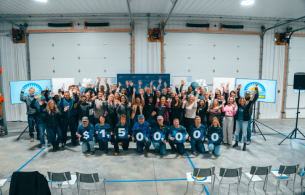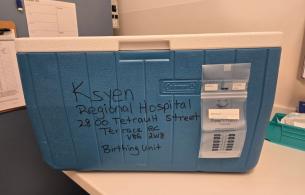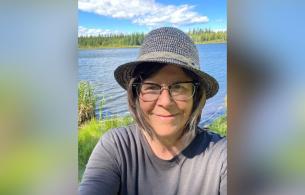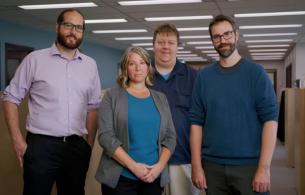I can still hear it. The sharp, piercing noise of the air horn that signaled a fire call from the Fire Centre, closely chased by the “wok wok wok” sound of our helicopter winding up. The memory brings back the emotions that always followed those sounds: initial excitement, slight anxiety, and the “I hope this isn’t the one that burns down the province” thought.
Such is the life of an Initial Attack Crew Leader with BC Wildfire Services, which I was from 2013-2015.
Wildfires are part of our ecosystem’s cycle. Truthfully, getting to see the full-circle effect of a wildfire is pretty cool – it was one of the more rewarding parts of the job for me. The green that comes through the burn after the fire has been out for a while is pretty spectacular. In no time, the buzz of insects returns and all sorts of creatures start stirring, preparing to make the area home again.
But, despite how positive all of this sounds, there are good fires and there are bad fires. And sadly, it’s only a 60:40 ratio.
A good fire (60%)
In a good fire, the weather has dried out the ground fuels (leaves, grass, downed branches) and lightning storms have come through, smacking a few trees around, sparking them up, and starting the natural renewal cycle. There’s also the elusive fire where a beaver chews through a poplar too quickly, lighting the deciduous tree up through raw friction. The beaver - an impressive and underrated species, in my opinion!
Whatever the cause, responders fly out, make a decision on whether or not the fire is safe to action, and then decide on the steps and resources needed to contain the fire effectively. They put the wet stuff on the hot stuff, direct the fire into a zone where it will burn itself out, and consider hundreds of other options and actions to end the fire and smoke.
A bad fire (40%)
Here’s an example of a bad fire situation:
A group of campers decide that they are exempt from the campfire ban, and are going to enjoy the weekend in whatever way they please. They make a campfire that doesn’t follow BC’s campfire regulations, they light off fireworks into the dry forest, and they take their squad of ATVs, equipped with piping hot exhausts, into the tall grass.
The emergency response? The exact same as a good fire, but with a few kicks.
These fires typically start in protected areas or close to structures, putting our parks and communities in danger. This means the crews have to issue fines, protect structures, or worse: knock on doors to let people know that they need to evacuate their homes for safety.
What you can do?
It’s our job to minimize our footprint on the forests each fire season. Instead of looking back on the summer, wishing that we had fewer smoky days, let’s be productive!
- Check the current campfire restrictions for the area you’ll be in.
- Completely extinguish your campfire before you go to sleep or leave your fire for any period of time.
- Do not discard smoking materials from vehicles.
- If you see a fire, report it! Dial 1-800-663-5555 or *5555.
Check out more tips at the Government of BC’s Wildfire Prevention page.
If you do find yourself in smoky skies this summer, it’s best to limit your exposure and try not to exert yourself – it can be hard on your health. Check out Paula’s blog, Breathe easier during smoky skies, for ideas on what to do if wildfire smoke causes poor air quality.














Comments